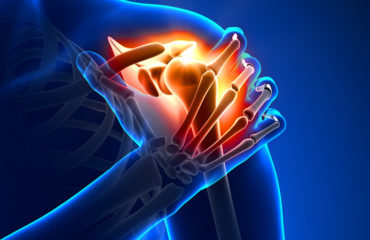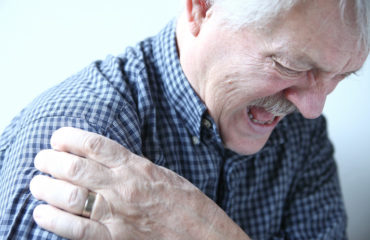by Adam Farber
The rotator cuff, a group of muscles and associated tendons, has the main function of stabilizing the shoulder. These tendons and muscles are wrapped around the shoulder joint, allowing it to engage in a wide range of motion. These motions include the ability to rotate the shoulder when lifting an object overhead, as well as rotating the shoulders during activities like swimming, tennis, bowling, or simply getting dressed or doing chores around the house.
Rotator cuff tears are very common injuries since the shoulders are constantly being used in performing various pushing, pulling, and/or lifting motions. These types of injuries are generally the result of either repetitive use injuries or traumatic injuries.
Non-Operative Treatment Options
There are non-operative treatment options that can help to effectively heal a rotator cuff tear which are quite simple and aid in pain relief. They also help to improve the strength and range of movement of the shoulder joint.
Treatment and recovery depends to a great extend on the severity of the rotator cuff injury. Non-surgical treatment options include rest, icing, cortisone injections, and/or physical therapy. The latter helps to develop overall rotator cuff strength so it will be less susceptible to future injuries.
Physiotherapy, combined with icing and anti-inflammatory (cortisone) medication, alleviate pain. Administration of cortisone injections will reduce any swelling so that therapy can begin as soon as possible after the rotator cuff tear.
Rest and Ice: Rest and icing the shoulder joint allow the pain and swelling to recede. While these may seem like simple solutions, they are crucial steps to prevent the rotator cuff tear from worsening. With sufficient rest, the rotator cuff often heals much more quickly. Any overhead movement or lifting with the injured arm should be curtailed. Utilizing an arm sling will help to prevent unnecessary movement and stress on the shoulder.
Physical Therapy: The majority of rotator cuff injuries can be treated effectively with simple exercises which are intended to promote muscle strength. While, basic rotator cuff rehabilitati on exercises involve stretching, they initially avoid any weight lifting exercises.
on exercises involve stretching, they initially avoid any weight lifting exercises.
Range of Motion (ROM) Exercises: The main goals of rotator cuff strengthening and range of motion (ROM) exercises are to alleviate pain as well as the reoccurrence of the condition. A strengthening and range of motion regime is essential to maintain fluidity of movement and optimal range of motion of the joints.
Rotator Cuff Strengthening
Rotator cuff injuries often result in the formation of scar tissue or soft tissue contraction. Hence, patients suffering from torn rotator cuffs can experience some degree of shoulder stiffness. Performing stretching exercises in the correct way aids patients in performing everyday activities without feeling as much shoulder stiffness. Range of motion exercises should be performed two times per day, carefully moving the shoulder joint as far as possible in all directions. These are also referred to as pendulum exercises.
When shoulder pain has been alleviated, carrying out strengthening exercises is important in order to maintain normal functioning and to prevent any future rotator cuff injuries. Ideal exercises include shoulder shrugs, rowing, or weight lifting (maximum two to four kilograms weights) and the use of thera-bands to increase strength and resistance. However , avoid any exercise that entails raising the injured arm overhead.
, avoid any exercise that entails raising the injured arm overhead.
Other forms of rotator cuff strengthening and physical therapy treatments can be prescribed by a trained physiotherapist or doctor to assist in quicker rates of recovery. These options may include transverse friction massages, electrogalvanic stimulation machine, ultrasound as well as mobilization of soft tissues to address rotator cuff scar tissue.



